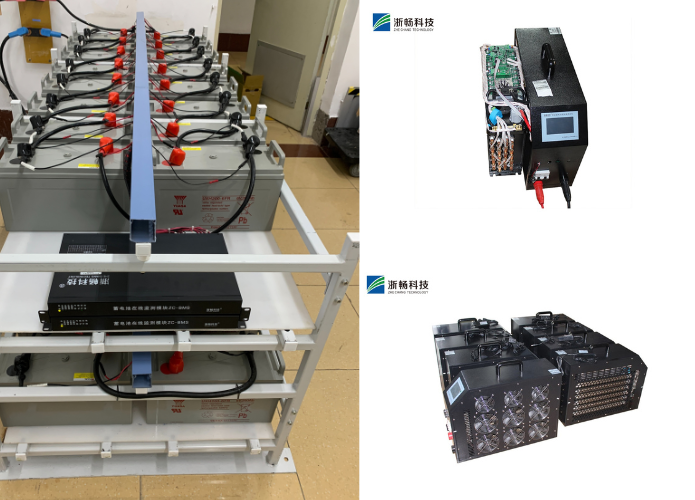How to Choose a Rechargeable Battery Tester?
Rechargeable batteries are essential in today’s world, powering everything from our smartphones and laptops to cordless tools and electric vehicles. However, to ensure these batteries are functioning correctly and efficiently, a reliable rechargeable battery tester is crucial. Whether you’re a professional technician, a gadget enthusiast, or a DIY hobbyist, understanding how to choose the right battery tester can save you time, money, and frustration.
In this comprehensive guide, we’ll explore everything you need to know about choosing a rechargeable battery tester, including the different types available, key features to look for, and how to use a tester effectively. We’ll also cover the importance of a battery condition tester and how it can help maintain your rechargeable batteries in optimal condition.
What is a Rechargeable Battery Tester?
A rechargeable battery tester is a device designed to evaluate the performance and capacity of rechargeable batteries. It measures various parameters such as voltage, current, resistance, and sometimes capacity, providing valuable information about the battery’s condition. These testers are essential tools for anyone who uses rechargeable batteries regularly, ensuring that batteries are functioning optimally and identifying when they need to be recharged or replaced.
How Does a Rechargeable Battery Tester Work?
Rechargeable battery testers work by applying a small load to the battery and measuring the resulting voltage and current. Some advanced testers can also measure the battery’s internal resistance, which can indicate its health and remaining lifespan. The tester then displays this information on a screen, allowing you to assess the battery’s condition and make informed decisions about its use.
Importance of Using a Rechargeable Battery Tester
Using a rechargeable battery tester is important for several reasons:
- Ensures Safety: Testing batteries regularly can prevent potential hazards such as leaks, short circuits, or overheating.
- Maximizes Battery Life: By monitoring a battery’s condition, you can ensure it’s charged and discharged correctly, extending its lifespan.
- Saves Money: Identifying weak or failing batteries early can prevent damage to devices and reduce the need for frequent battery replacements.
Why You Need a Battery Condition Tester
A battery condition tester is specifically designed to assess the overall health and performance of a battery. Unlike simple voltage testers, battery condition testers provide a more comprehensive analysis, including capacity, internal resistance, and overall health status. This information is crucial for determining whether a battery can still perform efficiently or if it needs to be replaced.
Key Benefits of a Battery Condition Tester
A Battery Condition Tester is an essential tool for anyone who relies on batteries for power, from automotive technicians to solar energy enthusiasts. One of the key benefits of using a battery condition tester is its ability to provide accurate assessments of a battery's health. By measuring various parameters such as voltage, current, and internal resistance, a tester can quickly determine whether a battery is functioning optimally or if it is nearing the end of its useful life. This early detection of potential issues can save users from unexpected failures, ensuring that equipment and devices remain operational when needed.
Another significant benefit of a battery condition tester is its ability to extend the lifespan of batteries. Regular testing allows users to monitor the performance of their batteries over time, helping to identify patterns of degradation. By addressing issues early—such as recharging a battery before it discharges too deeply or replacing a failing battery before it can damage connected equipment—users can prevent premature battery failure. This not only saves money by reducing the frequency of battery replacements but also contributes to more sustainable battery usage by minimizing waste.
Additionally, a battery condition tester enhances safety. Batteries, especially those used in high-power applications, can pose risks if they fail unexpectedly. A tester helps mitigate these risks by providing crucial information about a battery's state, allowing users to take preventive measures before a failure occurs. For instance, a tester can detect when a battery is at risk of overheating or leaking, enabling users to replace the battery before it becomes a hazard. This is particularly important in environments where safety is a priority, such as in automotive or industrial settings.

Types of Rechargeable Battery Testers
When choosing a rechargeable battery tester, it’s essential to understand the different types available. Each type offers varying levels of functionality and is suited for different applications.
1.Basic Voltage Testers
Basic voltage testers are the simplest type of battery testers. They measure the voltage of a battery to determine if it is within the acceptable range. While they are easy to use and inexpensive, they do not provide detailed information about the battery’s overall condition.
Pros:
Affordable
Easy to use
Suitable for quick checks
Cons:
Limited functionality
Does not provide detailed health information
2. Load Testers
Load testers apply a specific load to the battery and measure how it responds. This simulates real-world conditions, providing a more accurate assessment of the battery’s performance under load.
Pros:
Provides more accurate readings
Simulates real-world usage
Cons:
More expensive than basic testers
Requires more knowledge to use correctly
3. Digital Multi-Testers
Digital multi-testers offer a combination of features, including voltage, current, and resistance measurements. Some advanced models also include capacity testing. These testers are versatile and suitable for a wide range of battery types and conditions.
Pros:
Versatile and comprehensive
Can test various parameters
Cons:
More expensive
May be complex for beginners
4. Smart Battery Testers
Smart battery testers are the most advanced option, offering detailed diagnostic information. They often include features like automated testing, data logging, and the ability to test multiple battery types simultaneously. These testers are ideal for professionals who need precise and detailed battery analysis.
Pros:
Advanced diagnostic capabilities
Automated testing and data logging
Cons:
High cost
Requires technical expertise to operate
Key Features to Consider When Choosing a Rechargeable Battery Tester
When selecting a rechargeable battery tester, several key features should be considered to ensure you choose the right tool for your needs.
1. Battery Compatibility
Ensure the tester is compatible with the types of batteries you use most frequently. Some testers are designed for specific battery chemistries, such as NiMH (Nickel-Metal Hydride), Li-ion (Lithium-Ion), or lead-acid, while others offer broader compatibility.
2. Testing Capabilities
Consider the testing capabilities you need. Basic testers may only measure voltage, while more advanced models can test current, resistance, and capacity. If you require detailed information about your batteries’ health, opt for a tester with comprehensive testing capabilities.
3. Display and Interface
A clear and easy-to-read display is essential for quickly interpreting test results. Look for testers with digital displays that provide detailed information at a glance. Some models also feature touchscreens or user-friendly interfaces that simplify operation.
4. Accuracy and Precision
Accuracy is crucial when testing batteries. Ensure that the tester you choose provides precise and consistent readings. Look for models with high-resolution displays and low tolerance levels for error.
5. Portability
If you need to test batteries on the go, portability is an important factor. Compact and lightweight testers are easier to carry and store, making them ideal for fieldwork or travel.
6. Durability
Durability is important, especially if you plan to use the tester in harsh environments. Look for models made from robust materials with protective features like shock resistance and waterproofing.
7. Price and Value
Consider your budget and the value the tester provides. While advanced testers with more features are often more expensive, they may be worth the investment if you require detailed diagnostics or need to test a variety of battery types regularly.
8. Additional Features
Some testers come with additional features like data logging, which allows you to track battery performance over time, or the ability to test multiple batteries simultaneously. Consider whether these features are important for your specific needs.
How to Use a Rechargeable Battery Tester
Using a rechargeable battery tester is generally straightforward, but it’s essential to follow the correct steps to ensure accurate results.
1. Preparing the Battery
Before testing, ensure the battery is clean and free from corrosion. Wipe down the terminals with a dry cloth if necessary. Make sure the battery is fully charged to get accurate results.
2. Setting Up the Tester
Select the appropriate settings on your tester based on the type of battery you’re testing. If your tester has multiple modes, ensure you’ve chosen the correct one for the battery chemistry (e.g., NiMH, Li-ion, etc.).
3. Connecting the Battery
Attach the tester’s probes or clips to the battery terminals. Ensure a secure connection to avoid false readings. Some testers have polarity protection, but it’s still important to connect the positive and negative terminals correctly.
4. Interpreting the Results
After running the test, the results will be displayed on the tester’s screen. For basic testers, you might only see the voltage, while more advanced models will display multiple parameters like internal resistance, capacity, and overall health.
5. Analyzing the Data
Use the data provided by the tester to determine the battery’s condition. Compare the results with the manufacturer’s specifications to decide whether the battery is still in good condition or needs to be replaced.
6. Maintaining the Tester
After use, clean the tester’s probes and store the device in a safe place. Regularly check for updates or calibration requirements, especially for digital and smart testers.
Common Mistakes to Avoid When Using a Battery Condition Tester
Even with the best equipment, mistakes can occur. Here are some common pitfalls to avoid when using a battery condition tester:
1. Testing Uncharged Batteries
Testing a battery that is not fully charged can lead to inaccurate results. Always charge the battery fully before testing to ensure you’re getting an accurate reading of its condition.
2. Ignoring Temperature Effects
Temperature can significantly affect battery performance and test results. Avoid testing in extreme temperatures and try to test batteries at room temperature whenever possible.
3. Misinterpreting Results
Understanding the results is crucial. If you’re unsure about what the readings mean, consult the tester’s manual or seek advice from a knowledgeable source. Misinterpreting results can lead to incorrect conclusions about a battery’s condition.
4. Using the Wrong Tester for the Battery Type
Different batteries require different testing methods. Using a tester that isn’t compatible with the battery type you’re testing can result in inaccurate readings or even damage the battery.
5. Skipping Regular Calibration
For accurate readings, especially on digital and smart testers, regular calibration is essential. Skipping this step can result in incorrect measurements over time.
Tips for Maximizing the Life of Your Rechargeable Batteries
While choosing the right tester is crucial, knowing how to care for your batteries will also help you get the most out of them. Here are some tips to extend the life of your rechargeable batteries:
1. Regular Testing
Regularly test your batteries to monitor their condition. This can help you catch issues early and take corrective action, such as reconditioning or replacing the battery.
2. Proper Charging Practices
Always use the correct charger for your batteries and avoid overcharging. Overcharging can lead to capacity loss and shorten the battery’s lifespan.
3. Avoid Deep Discharge
Try not to discharge your batteries completely before recharging them, as this can lead to capacity loss and shorten their overall lifespan. Lithium-ion batteries, in particular, should not be deep discharged.
4. Store Batteries Properly
When not in use, store your batteries in a cool, dry place. Avoid exposing them to extreme temperatures, as this can degrade their performance over time.
5. Rotate Batteries
If you have multiple batteries, rotate their use to ensure even wear and extend the overall life of your battery collection.

Conclusion
Choosing the right rechargeable battery tester is essential for anyone who relies on rechargeable batteries, whether at home, in the workshop, or in a professional setting. By understanding the different types of testers available and the key features to look for, you can select a tool that meets your needs and helps you maintain your batteries in optimal condition.
A battery condition tester goes a step further, providing a detailed analysis of your battery’s health, allowing you to make informed decisions about recharging, replacing, or repurposing your batteries. By following the tips and advice in this guide, you’ll be well-equipped to choose the right battery tester and extend the life of your rechargeable batteries.
Regular testing, combined with proper battery care, will ensure that your batteries perform at their best, saving you time, money, and hassle in the long run.
Popular Battery Tester
Popular Battery Tester
Latest News
Latest News


Get Price of Battery Tester
Get Price of Battery Tester
Address:
Floor 3, Building 1, No.1418-60, Moganshan road, Hangzhou city, Zhejiang Province, China.310015


















































